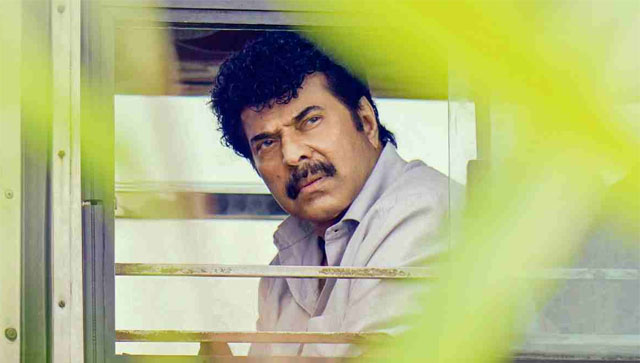Lijo Jose Pellissery’s Nanpakal Nerathu Mayakkam works effortlessly to portray different kinds of duality. Be it within the world of James and Sundaram (both performed by Mammootty ), in exploring the viewpoint of women vs men on a pilgrimage tour, or the conflict that two wives feel while standing on opposing side – it is simple, yet captivating. While Theni Eswar supports this parallel narrative with beautiful shots of a village in Tamil Nadu, what really captured my attention as someone who loves Kannadasan songs is how the same has been interspersed throughout the close to 2 hours runtime of the film. It is not only the celebrated lyricist’s songs that the director uses to aid his narrative and provide a parallel narrative encounter. It is also how he uses dialogues from old black-and-white films to add an extra charming layer to the proceedings of the film. For instance, when Kuzhali returns James’ clothes to Sally and returns to her home, the dialogue that runs n the background speaks about shame, and guilt. It is indicative of Kuzhali’s headspace. After all, here is a man she has never seen before, but an eerie sense of familiarity has shocked her into silence. The unexplainable event that followed the event of a siesta on a beautiful lazy afternoon has no explanation and Kuzhali is as clueless as everybody else. Then, there is a brilliant scene of Sundaram trying to convince everyone around him of who he is. The performance at this point by Mammootty is stellar definitely, but if you pay close attention, his statements are all punctuated by a movie’s dialogue that runs in a somewhat parallel fashion to his sentiments. It is about a man wondering why no one would believe him. There is frustration rooted here, but you get a better sense of it through the dialogue that runs in the background. There are several such scenes in the film. Of course, this is not to say that one wouldn’t enjoy the film if one were to not understand the finer details of embellishment. It is, however, an element of the film that endeared me to the story. The placement of “veedu varai uravu” from 1962 film Paadha Kaanikkai comes at a moment of realization, one that further makes us question the possibility of James existing within Sundaram, and vice versa. There are multiple ways to interpret Nanpakal Nerathu Mayakkam. What I find the most intriguing is the possibility that everyone carries duality within them, and all it takes to awaken it, is an afternoon slumber where the mind rests between consciousness and involuntary surrendering of the same. The song originally questions who and what we take to our graves. It points out how every relationship lives within a boundary that allows them to travel with you only up to a certain point in life. To use this song at the moment that Lijo did results in traversing simple meta-messaging that is usually done as a form of fan service. Other songs such as “mayakkama kalakkama” from 1962 film Sumaithangi and “partha nyabagam illaiyo” from 1964 film Puthiya Paravai is also used at opportune moments. Then there is the use of a Kural at the very beginning of the film. The iconography of this particular scene is striking and in hindsight, it is the one scene that truly encompasses the heart of this film. The scene sees Gods of different religions looking down upon James, while he pays attention to the Kural written on the board. It is the 339th Kural by Thiruvalluvar that comes under the chapter of Instability, and it simply translates to “Death is like falling asleep, and birth, on the other hand, is like the cobwebs of sleep clearing up and the beginning of an awakening.” The audience is free to interpret the songs and dialogues that are used in the background as they will. One can just assume that they are nothing but enhancers of the era that the film is set in, and chalk it up to general background music and still enjoy the film. However, the Kural is important, as it is something that James momentarily ponders on. Duality is a theme here as well, and it comes in the form of death and birth. He also has a close call with rebirth in the film, and within the realms of reality that exist within Nanpakal Nerathu Mayakkam, this interaction bridges the gaps between the duality of James and Sundaram’s character. The film with its style, narrative and performance reminds me of Aldous Huxley’s words in Ends and Means. “Man is a double being and can take, now the god’s-eye view of things, now the brute’s-eye view.”
Priyanka Sundar is a film journalist who covers films and series of different languages with a special focus on identity and gender politics. Read all the Latest News , Trending News , Cricket News , Bollywood News , India News and Entertainment News here. Follow us on Facebook , Twitter and Instagram .
)